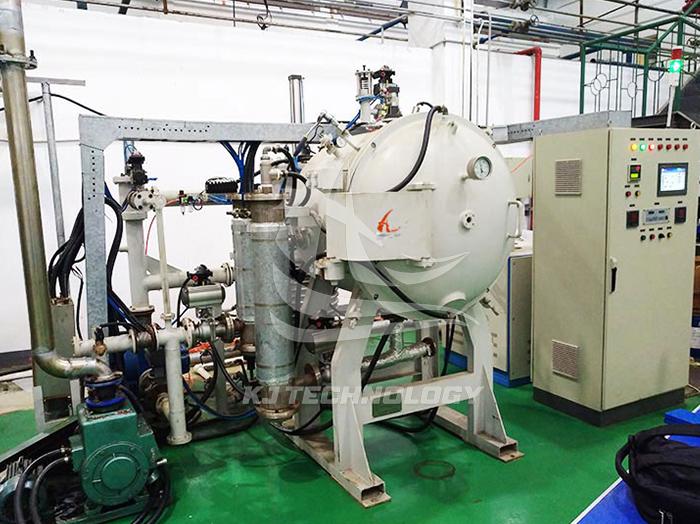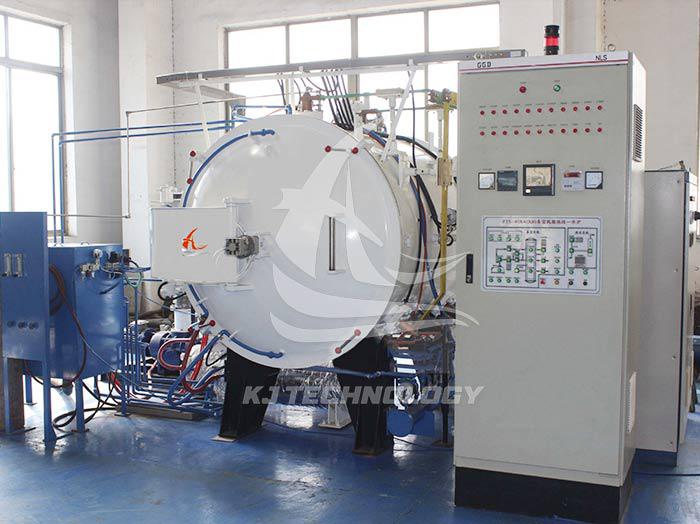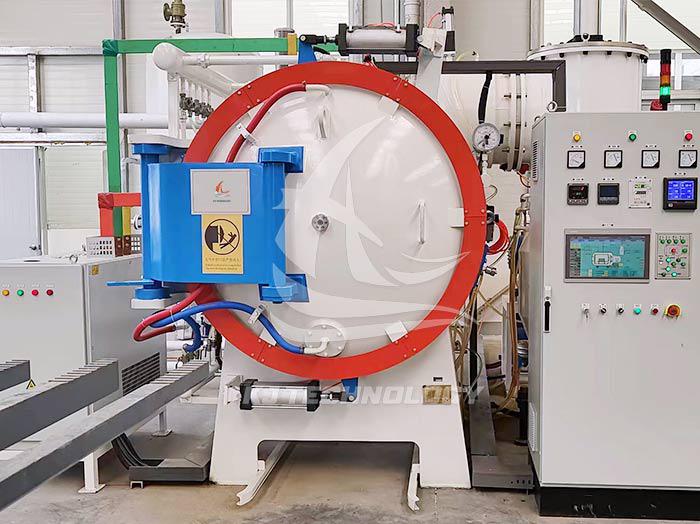What are the advantages of using a small vacuum furnace for experiments?
 10-21-2025 Author: KJ technology
10-21-2025 Author: KJ technology
The experimental small vacuum furnace combines the advantages of vacuum environment and high-temperature treatment, and has a wide range of applications in materials science, semiconductors, new energy and other fields. Its core advantages are reflected in five aspects: protection, accuracy, efficiency, multifunctionality, and security, as follows:
1. Oxygen free environment to prevent material oxidation and pollution
Avoid oxidation reactions
A vacuum environment can isolate oxygen and prevent materials such as metals and ceramics from oxidizing at high temperatures. For example:
Metal heat treatment: High speed steel and mold steel are quenched under vacuum, with no oxide layer on the surface, improved hardness, and significantly enhanced wear resistance.
Semiconductor annealing: Silicon wafers are vacuum annealed in an N ₂ atmosphere, resulting in a decrease in surface defect density and an increase in carrier mobility.
Reduce impurity pollution
A vacuum environment can eliminate impurities such as dust and moisture from the air, making it suitable for the preparation of high-purity materials. For example:
Optical coating: Deposition of anti reflective film under vacuum, with good film uniformity and higher light transmittance.
Biomaterial processing: Bioceramics (such as hydroxyapatite) are sintered under vacuum to avoid organic contamination and improve biocompatibility.
2. High precision control to improve experimental repeatability
Accurate temperature control
Adopting a digital intelligent temperature control system, the temperature range covers 1000 ℃ -3000 ℃, with a temperature control accuracy of ± 1 ℃ and a temperature uniformity of ± 5 ℃. For example:
Precision ceramic sintering: Silicon nitride (Si3N4) ceramics are sintered under vacuum at 1800 ℃, resulting in higher density and better bending strength.
Preparation of metallic glass: Zirconium based amorphous alloys have a lower crystallization rate after rapid heating (50 ℃/s) to the glass transition temperature and insulation.
Accurate control of atmosphere ratio
Supports multiple gas inputs with a flow accuracy of ± 1% F.S., capable of achieving complex atmosphere environments. For example:
CVD deposition: SiH ₄ and NH3 (ratio 1:3) are introduced to deposit silicon nitride thin films under vacuum, resulting in better thickness uniformity.
Metal reduction: Reduction of iron oxide in a mixture of H ₂/Ar gas (volume ratio 1:9) results in better purity of iron powder.
3. Efficient and energy-saving, shortening the experimental cycle
Rapid temperature rise and fall
Graphite or metal heating elements combined with efficient cooling systems result in faster heating and cooling rates. For example:
Short term high temperature experiment: A small high vacuum furnace at 1100 ℃ can reach the target temperature within 10 minutes, shortening the experimental period.
Rapid heat treatment: The metal sheet is quenched within 30 seconds under vacuum, and the grain refinement effect is significant.
Multi layer insulation design
The furnace body is made of materials such as graphite felt and graphite cylinder, which reduces heat loss and improves energy efficiency compared to traditional furnaces. For example:
Continuous production: The laboratory specific vacuum hot press furnace works continuously for 24 hours, reducing energy consumption and suitable for batch experiments.
4. Multi functionality, adaptable to diverse experimental needs
Support multiple heat treatment processes
Vacuum quenching: High speed steel cutting tools are quenched under vacuum at 1050 ℃, resulting in high hardness.
Vacuum annealing: Stainless steel bearings are annealed under vacuum at 850 ℃, resulting in a higher rate of internal stress relief.
Compatible with different material systems
Metal materials: titanium alloys, nickel based high-temperature alloys, etc. are processed under vacuum to avoid element volatilization.
Ceramic materials such as silicon carbide (SiC) and aluminum nitride (AlN) are sintered under vacuum for better density.
Composite materials: Carbon fiber reinforced ceramic matrix composite materials are hot pressed under vacuum, which improves the interfacial bonding strength.
5. Safe and reliable, reducing experimental risks
Multiple security protections
Water pressure loss alarm: Automatically shut down when the cooling water flow is insufficient to prevent damage to the heating element.
Overcurrent protection: Cut off the power supply when the current exceeds the limit to avoid equipment overheating.
Pressure relief valve: Automatically releases pressure when the furnace pressure exceeds 0.02MPa to prevent explosion.
Explosion proof design
Hydrogen specific model: equipped with explosion-proof electrical appliances and hydrogen concentration detectors, hydrogen experiments require the presence of two or more people.
Ventilation system: The experiment was conducted in a fume hood, and the exhaust gas was treated by catalytic combustion to meet environmental requirements.








